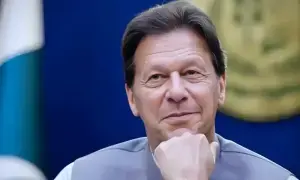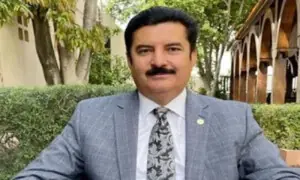What are the Fed's new hurdles for rate hikes? Only the Fed knows
(Reuters) - The U.S. Federal Reserve on Wednesday effectively established a three-part test that must be met before it will raise interest rates: the economy must be at “maximum employment,” inflation must have “risen to 2 percent” and it must be “on track to moderately exceed 2 percent for some time.”
It may be years before the economy reaches any of those hurdles, let alone all three, fresh forecasts released by the Fed on Wednesday suggest. Most policymakers see inflation only reaching 2% by 2023, with unemployment still above pre-crisis levels.
Even so, questions are already swirling about what the hurdles will mean in practice.
LOW UNEMPLOYMENT, BUT SO MUCH MORE
Fed Chair Jerome Powell said the economy was a “long way” from meeting this test and that he would “love” to get back to the pre-crisis unemployment rate of 3.5% or lower, from 8.4% now.
Still, he said there is “no magic number” defining maximum employment and then went on to list a number of other benchmarks the Fed would need to see met, including high labor force participation and wage growth.
The lack of precision for measuring maximum employment, a goal the Fed only last month chose to emphasize in a revamp of its operating framework, “renders the full employment threshold largely meaningless” Barclays economists wrote. It means, in practice, “the Fed will rely on inflationary pressures to indicate when maximum employment has been obtained.”
STICKING THE LANDING ON INFLATION
To meet the hurdle on inflation rising to 2%, Powell said Wednesday, it wouldn’t be enough for inflation to hit 2% for just one month and then fall back. “The idea that we would look for the quickest way out is just not who we are,” he said.
But how many months of 2% inflation are enough? He didn’t say. Nor did he say how they would get it there in the first place.
“The direction is a very sensible one,” said Randall Kroszner, deputy dean of the University of Chicago’s Booth School of Business and a former Fed governor. “But I am concerned that they think this is now going to make a big difference in terms of market expectations and in some sense that this may substitute for other actions” such as more bond buying to push down longer-term borrowing costs.
‘ON TRACK TO MODERATELY EXCEED 2%... FOR SOME TIME’
Of the three tests, this one came with the most modifiers. Powell gave some clarification, saying the Fed is aiming for inflation “not very high above 2%” and “not permanently, not for a sustained period.”
Inflation hasn’t done more than rise briefly above 2% for many years, not just when the U.S. economy was weak but even when unemployment was plumbing decades-low levels in the months before the coronavirus crisis hit. Globalization, trade and advances in technology have been pushing down on prices worldwide; aging populations in the United States and elsewhere have similarly muted inflation by slowing growth and demand. None of that is going away.
Determining whether inflation is “on track” to satisfy both the “moderately” and “for some time” requirements may fall largely to a judgment call.
Still, says Nomura’s chief U.S. economist Lewis Alexander, if the Fed manages to meet its first two hurdles - maximum employment and 2% inflation, “with short-term rates still at the effective lower bound, it seems likely that the third condition will be met.”
WHAT ABOUT WIGGLE ROOM?
The new guidance is the Fed’s version of a “pinky promise” on interest rates - they won’t raise them until the test is met.
“Basically they have set themselves up to ignore any improvement until you get to this magical point where inflation is above 2%,” says University of Oregon economics professor Tim Duy.
But what if the recovery, which so far has been faster than many at the Fed expected, continues to beat forecasts?
“They have at least in the near term really locked themselves into a path where it’s going to be hard to back away from low interest rates,” Duy said. The Fed, however, did not make a similar promise on maintaining asset purchases, and could cut them if financial markets or the economy seemed to be heating up too fast, he said.
Others see it differently. “While the forward guidance does not apply to QE, we should expect that asset purchases will continue at least until maximum employment and 2% inflation are well within sight,” wrote Steven Friedman, an economist at MacKay Shields.














Comments are closed on this story.